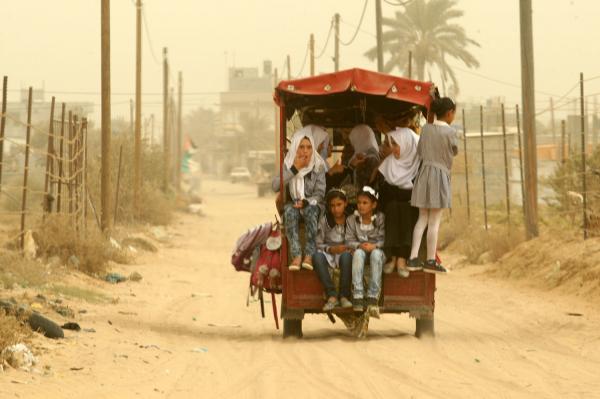
MAINZ, Germany, May 2 (UPI) — Temperature and sea level aren’t the only things expected to rise as a result of climate change. As heat becomes more extreme in some parts of the world, scientists expect a significant rise in the number of climate refugees.
Climate scientists with the Max Planck Institute for Chemistry expect the coming decades to feature a mass exodus of millions from the Middle East and North Africa as extreme temperatures become more common.
Since 1970, the number of extremely hot days has doubled. The trend is expected to continue as the planet warms. But whereas other regions are likely to experience the most significant temperature rises in the winter months, the Middle East and North Africa are expected to see temperatures rise most dramatically during the summer months.
“In future, the climate in large parts of the Middle East and North Africa could change in such a manner that the very existence of its inhabitants is in jeopardy,” Jos Lelieveld, director of the Max Planck Institute for Chemistry and a professor at the Cyprus Institute, said in a news release.
Climate models suggest the region will regularly experience midday temperatures of 114 degrees Fahrenheit by the middle of the century. By 2100, hotter days could feature midday highs of 122 degrees Fahrenheit.
By the end of the century, heat waves will be ten times as frequent. Last summer, a lengthy heat wave saw temperature records broken in several Middle Eastern cities.
“If mankind continues to release carbon dioxide as it does now, people living in the Middle East and North Africa will have to expect about 200 unusually hot days, according to the model projections,” said Panos Hadjinicolaou, an associate professor of climate science at the Cyprus Institute.
In addition to more extremely hot days, models suggest the region can expect an increase in pollution problems, as the particulate matter becomes more concentrated in the atmosphere. More frequent droughts and sandstorms are also expected.
“Climate change will significantly worsen the living conditions in the Middle East and in North Africa. Prolonged heat waves and desert dust storms can render some regions uninhabitable, which will surely contribute to the pressure to migrate,” added Lelieveld.






